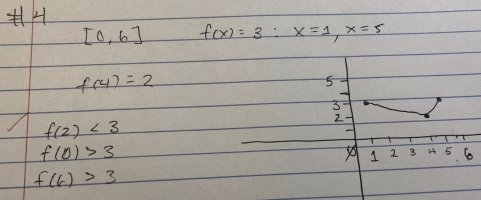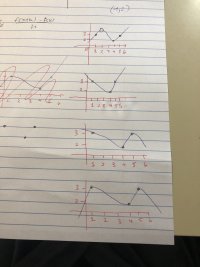Hi. I'm stuck on this homework question. The question itself and my work so far is attached.
Basically, the only option that makes sense to me is f(2) < 3 because the function at x=2 is less than 3. But, someone I know had that same answer and it's wrong.
Can someone please explain how I continue the graph and how there's other options that must be true?
I appreciate all your help. Even if it's just a hint.


Basically, the only option that makes sense to me is f(2) < 3 because the function at x=2 is less than 3. But, someone I know had that same answer and it's wrong.
Can someone please explain how I continue the graph and how there's other options that must be true?
I appreciate all your help. Even if it's just a hint.



